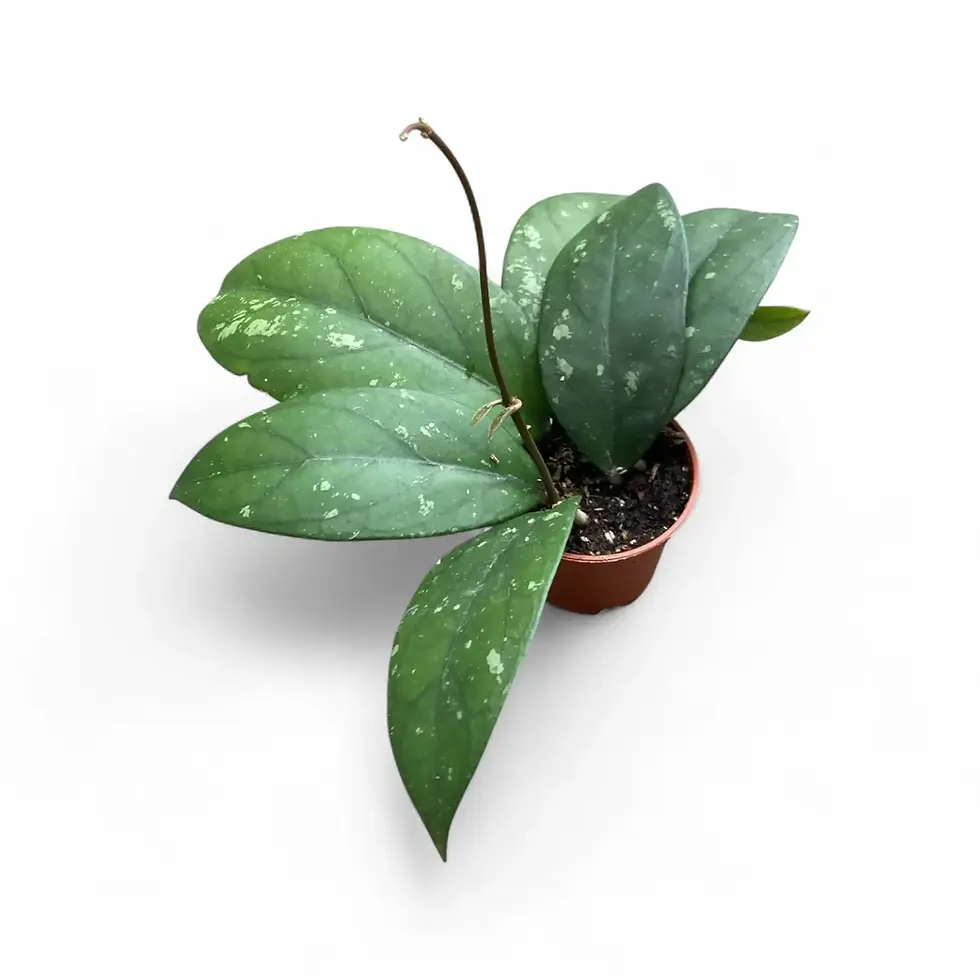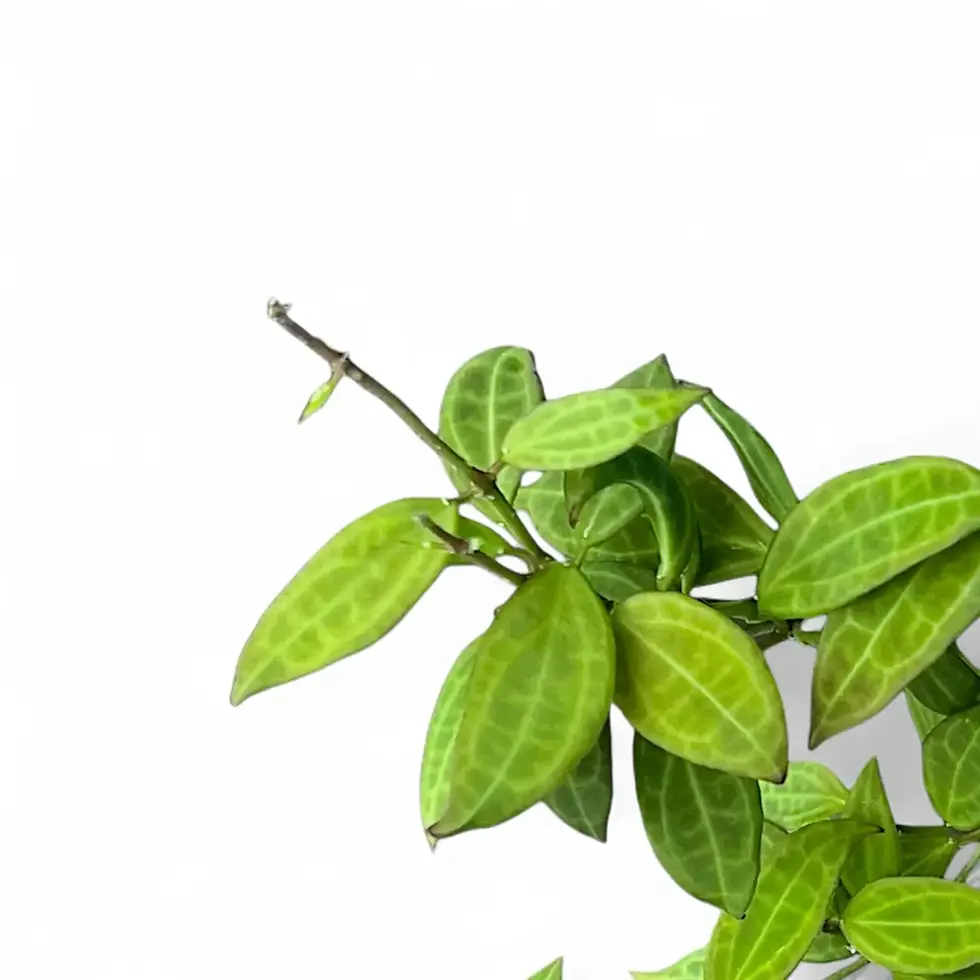Begonia maculata 'Double Dot' – Profile, Origin & Indoor Growing Guide
Begonia maculata 'Double Dot' isn’t your standard polka dot begonia — it stands out with an intensified pattern of silvery spots across deep green, angel-wing leaves. The matte foliage surface and rich red undersides add contrast, while clusters of soft pink flowers can appear indoors in spring or summer. This cane-type begonia combines upright growth with shimmering foliage for a bold display in any bright, warm space.
Key Visual Features & Growth Habits
- Dark green, wing-shaped leaves with extra-dense silver spotting
- Reddish undersides that glow when backlit
- Pink bloom clusters under ideal indoor conditions
- Upright cane growth, approx. 30–50 cm tall and 30 cm wide
- Compact, vertical habit suitable for shelves or grouped displays
Natural Context & Botanical Background
‘Double Dot’ originates from Begonia maculata Raddi, a species native to Brazil’s Atlantic rainforest, where it thrives in filtered light, warmth (20–28 °C), and high humidity. This cultivar mirrors the species’ needs: stable warmth, indirect light, and airy soil for steady growth.
- Growth habit: Upright cane type, branches with age
- Growth speed: Moderate with light and warmth
- Indoor height: Up to 50 cm
- Toxicity: Contains calcium oxalate; toxic if ingested
Care Guide for Begonia maculata 'Double Dot'
- Light: Bright, indirect light; avoid direct midday sun
- Watering: Let top 2–3 cm of soil dry before watering
- Humidity: Best at 50–70%; avoid dry air
- Temperature: 18–26 °C, never below 15 °C
- Soil: Fast-draining mix with bark and perlite
- Pot: Slightly snug pot with drainage; avoid oversizing
- Fertilizer: Diluted liquid feed every 2–4 weeks during growth
- Repotting: Only when rootbound, ideally spring
- Propagation: Cane cuttings in water or moist substrate
- Semi-hydro: Adapts to mineral-based setups in stable warmth
- Pruning: Pinch tips for bushier growth; remove leggy stems
Common Issues & Fixes
- Yellow leaves: Overwatering or poor drainage
- Brown edges: Low humidity or fertilizer salt buildup
- Powdery mildew: Caused by stagnant air and high humidity; remove affected leaves and improve airflow
- Pests: Watch for spider mites, mealybugs, thrips; treat with insecticidal soap
- Leggy growth: Low light; prune and move to brighter spot
Extra Tips for Success
Use a slim stake if canes lean. Clean leaves regularly to keep the silver pattern vibrant. Prune lightly in low-light months for compact form. Mimic its rainforest roots: filtered light, consistent warmth, and humidity for year-round vigor.
Etymology & Name Origin
The genus Begonia honors French botanist Michel Bégon. The species name maculata means “spotted” in Latin. Described in 1820 by Giuseppe Raddi, the plant’s modern cultivar ‘Double Dot’ was selected for its enhanced spotting pattern and ornamental appeal.
FAQs
Will it bloom indoors?
Yes, in warm, bright conditions, typically in spring or summer.
Why are new leaves smaller?
Often due to low light or watering stress; adjust care and be patient.
Do spots change with light?
No — spotting is genetic; light influences growth rate, not pattern.
Order Begonia maculata 'Double Dot' today for a striking foliage plant with refined elegance and dependable indoor performance.
Begonia maculata 'Double Dot'
Begonia maculata 'Double dot' is approximately 20 cm tall and comes in a ⌀ 12 cm pot.
































